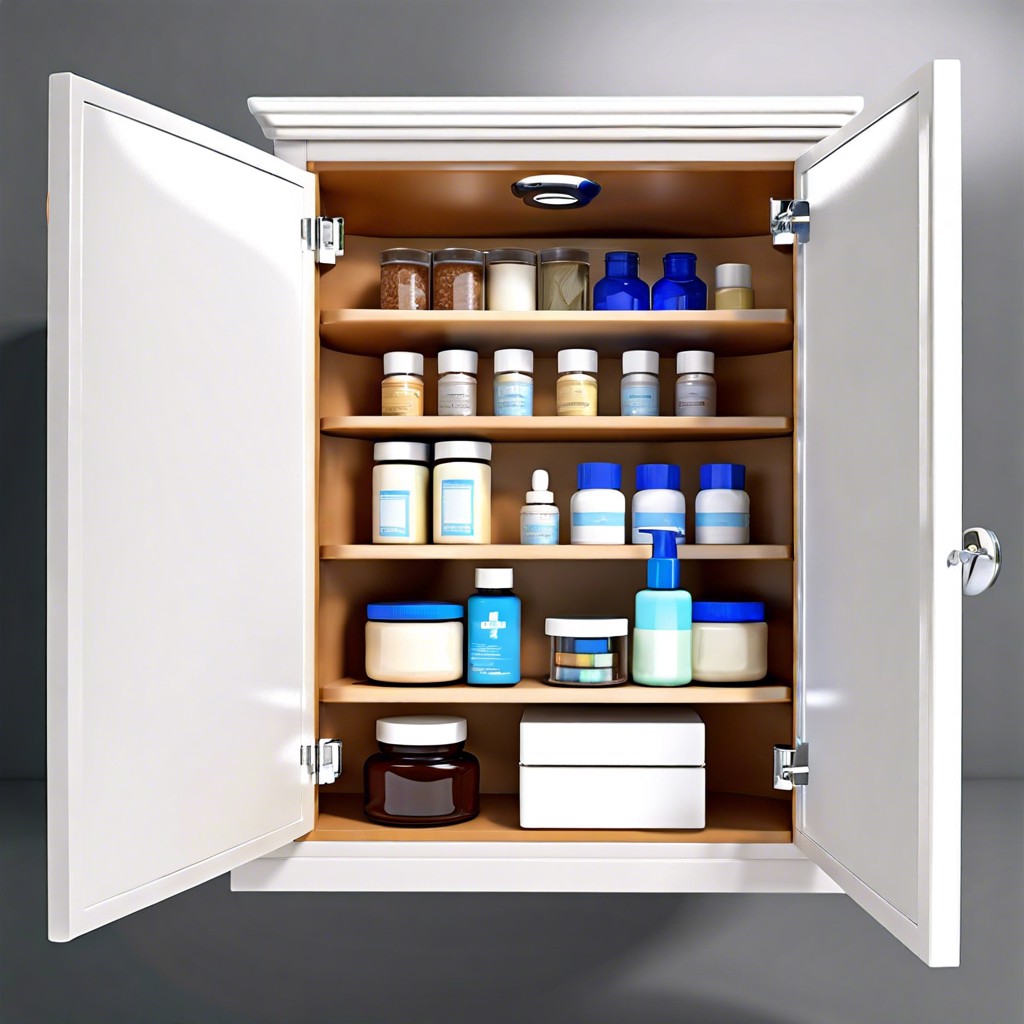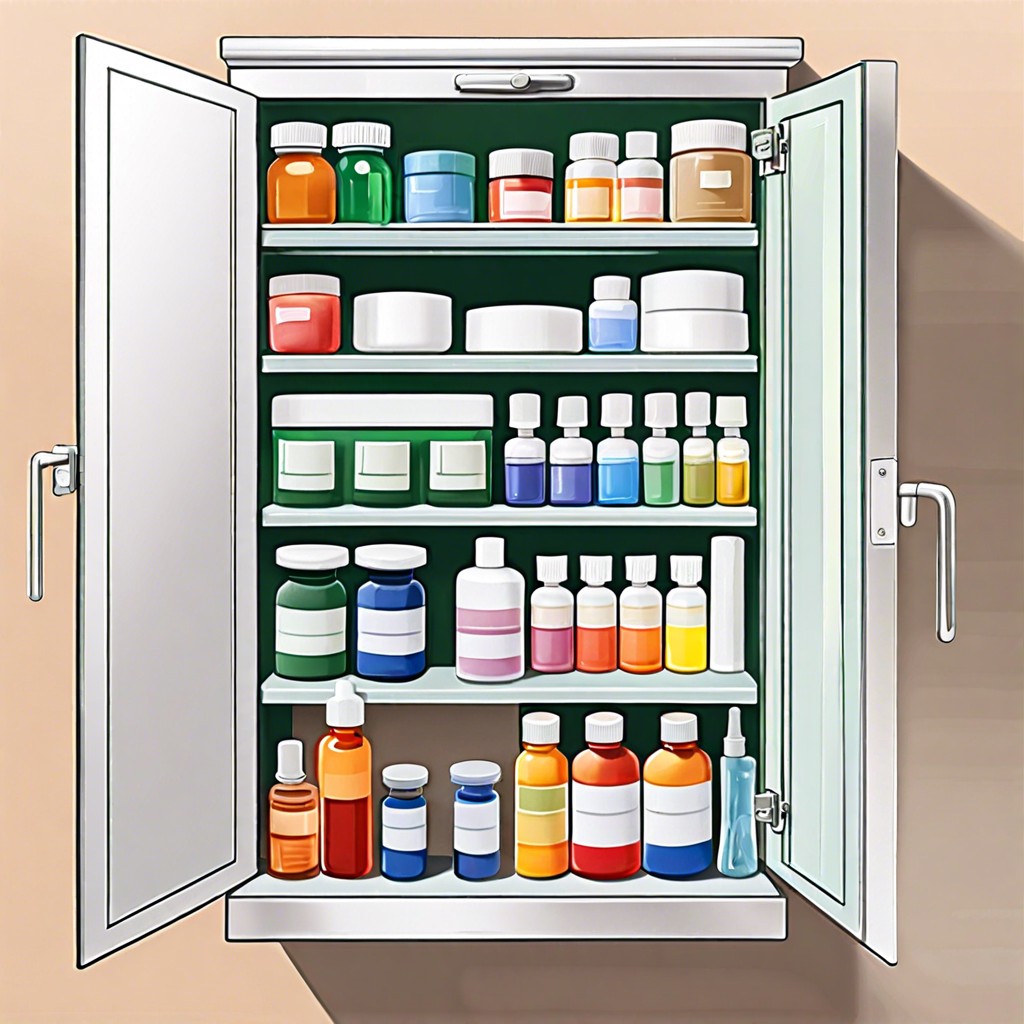Last updated on
Discover practical strategies for creating an orderly and accessible medicine cabinet.
Use a Lazy Susan for Easy Access

A Lazy Susan brings the back of the cabinet to you, rotating essentials to the front with a simple spin.
Implement a Color-Coding System

Assign distinct hues to each category of medicine, allowing for swift identification and retrieval of health essentials.
Install a Secret Compartment
A hidden compartment offers a discreet spot for storing prescriptions away from prying eyes or children.
Use Vertical Space With Stackable Bins
Maximize every inch by stacking bins upward, instantly doubling or tripling your storage capacity.
Implement a First-In-First-Out Rotation
To maintain medication efficacy and prevent waste, categorize items by expiration date, placing those that expire soonest at the front.
Hang Hooks for Small Bags/Pouches
Maximize your cabinet’s interior space by affixing hooks to hang small, frequently used items within easy reach.
Integrate a Pill Organizer Section
Allocate a specific area within your medicine cabinet for a pill organizer to streamline your daily medication routine.
Utilize Door Storage With Racks
Door-mounted racks transform unused space into a convenient spot for storing bottles and tubes, making them quickly accessible without cluttering shelves.
Add a Pull-Out Shelf System
A pull-out shelf system increases the accessibility of deeper cabinet spaces, allowing for an organized and smooth retrieval of medications.
Dedicate a Shelf for Child-Proof Containers
Allocate a specific zone for containers that thwart curious little hands, safeguarding both the children and the medicines.
Set Up a Reminder System for Expirations
Craft a method to track expiry dates, ensuring you discard outdated medications promptly.
Theme-Based Organization (Cold, Allergy, Pain Relief)
Group remedies by ailment, such as cough suppressants and decongestants for colds, antihistamines for allergies, and painkillers for aches, saving time during those under-the-weather moments.
Use Drawer Dividers for Smaller Items
Drawer dividers transform jumbled collections of small medical supplies into neatly sorted compartments for effortless identification.
Utilize a Digital Inventory Tracker
A digital inventory tracker streamlines management of medications by monitoring quantities and expiration dates.
Install LED Lights for Better Visibility
Brighten up your space and avoid mix-ups with well-placed LEDs, shedding light on even the smallest labels.
Ideas Elsewhere
- https://www.loveandrenovations.com/medicine-cabinet-organizer/
- https://www.bhg.com/bathroom/storage/storage-solutions/bathroom-medicine-cabinet-organization/
- https://justagirlandherblog.com/medicine-cabinet-organization/
- https://www.containerstore.com/organization-projects/bathroom/tip/how-organize-medicine-cabinet
Recap




